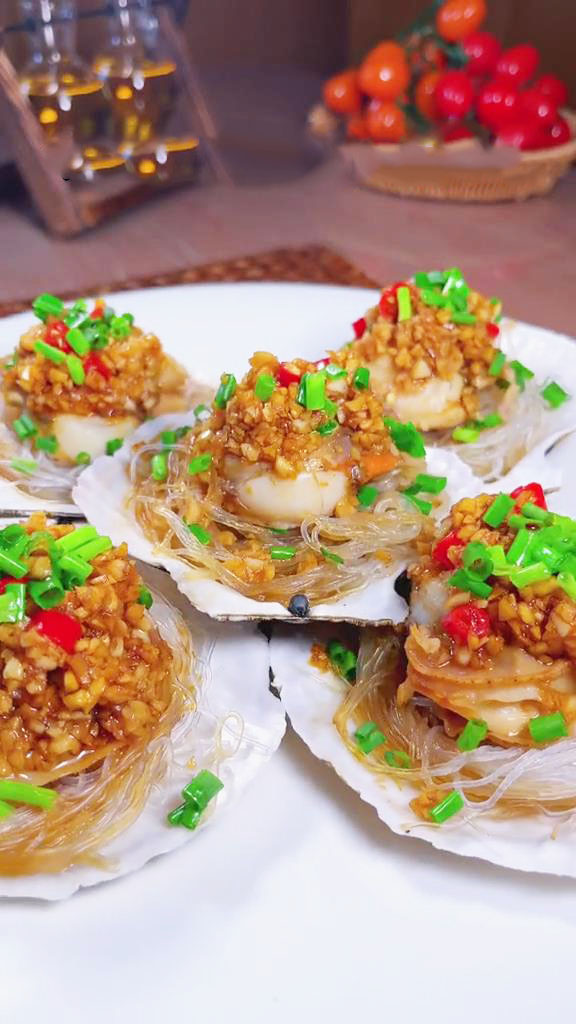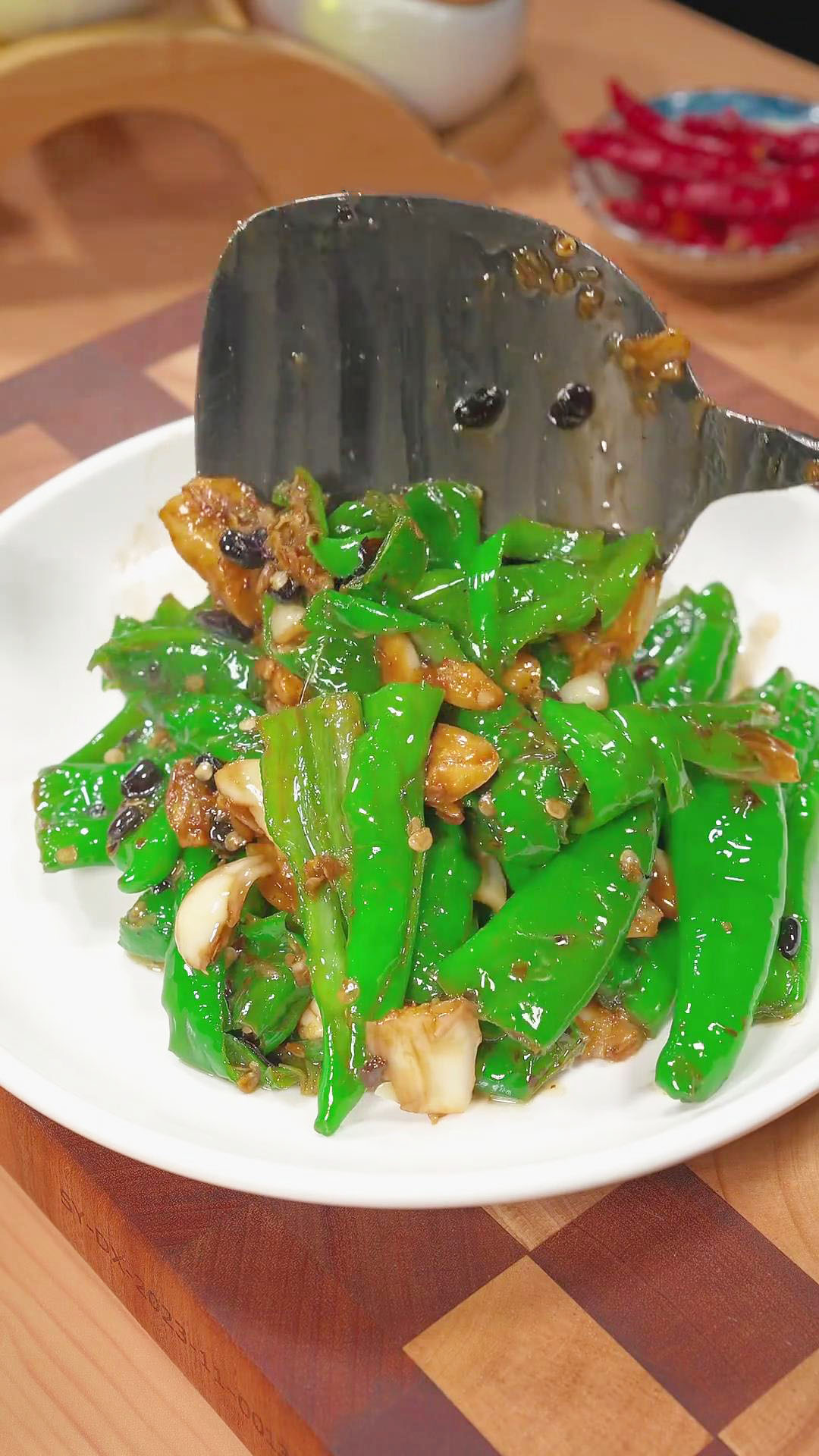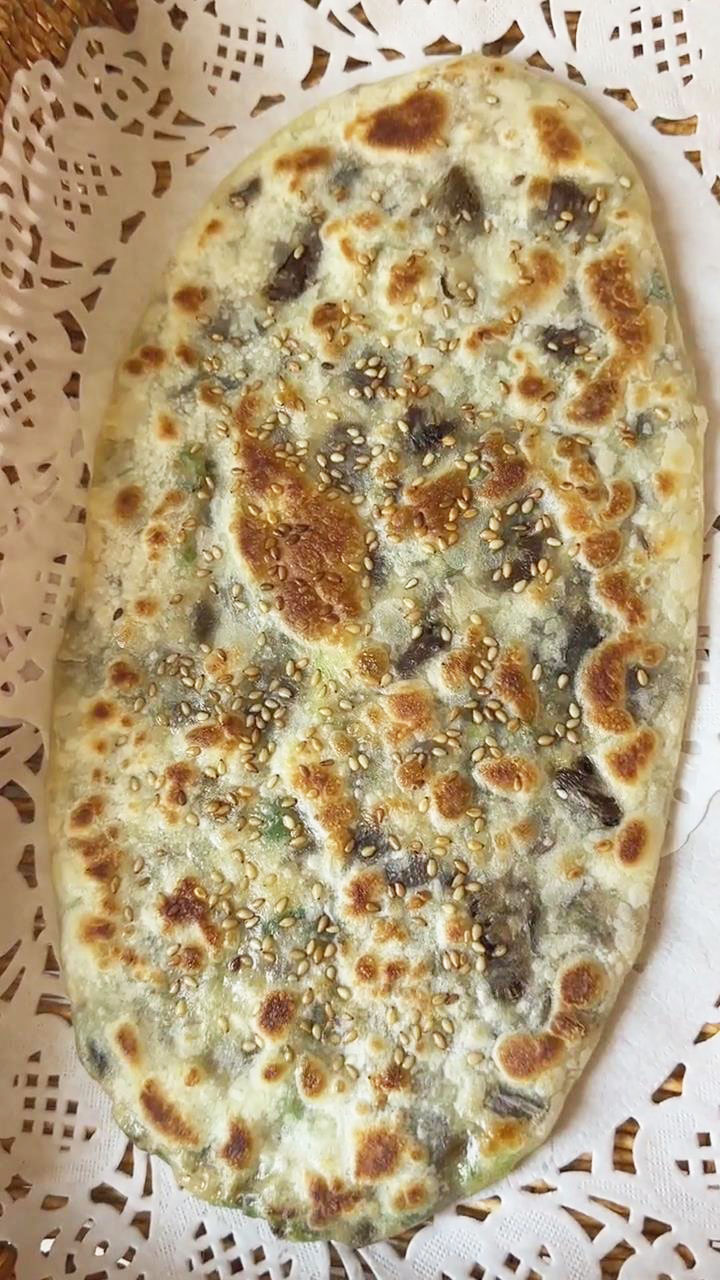This post may contain affiliate links. Please read our disclosure policy.
Indulge in the delectable world of sweet potato mochi, where each bite offers a delightful blend of softness, stickiness, and sweetness. This beloved treat is cherished by both adults and children alike for its irresistible texture and satisfying taste.
What is sweet potato mochi?
For traditional mochi recipes, the process usually involves mixing glutinous rice flour with room temperature water to form a dough.
This dough is then steamed until cooked through. After steaming, the dough is kneaded until smooth and pliable, then it’s shaped into small portions that are used to encase the desired filling.
Whether it’s sweetened red bean paste, like in my red bean mochi, fruit, as seen in my Strawberry Mochi, or another flavorful filling, the dough is wrapped around it to form individual mochi balls or cakes.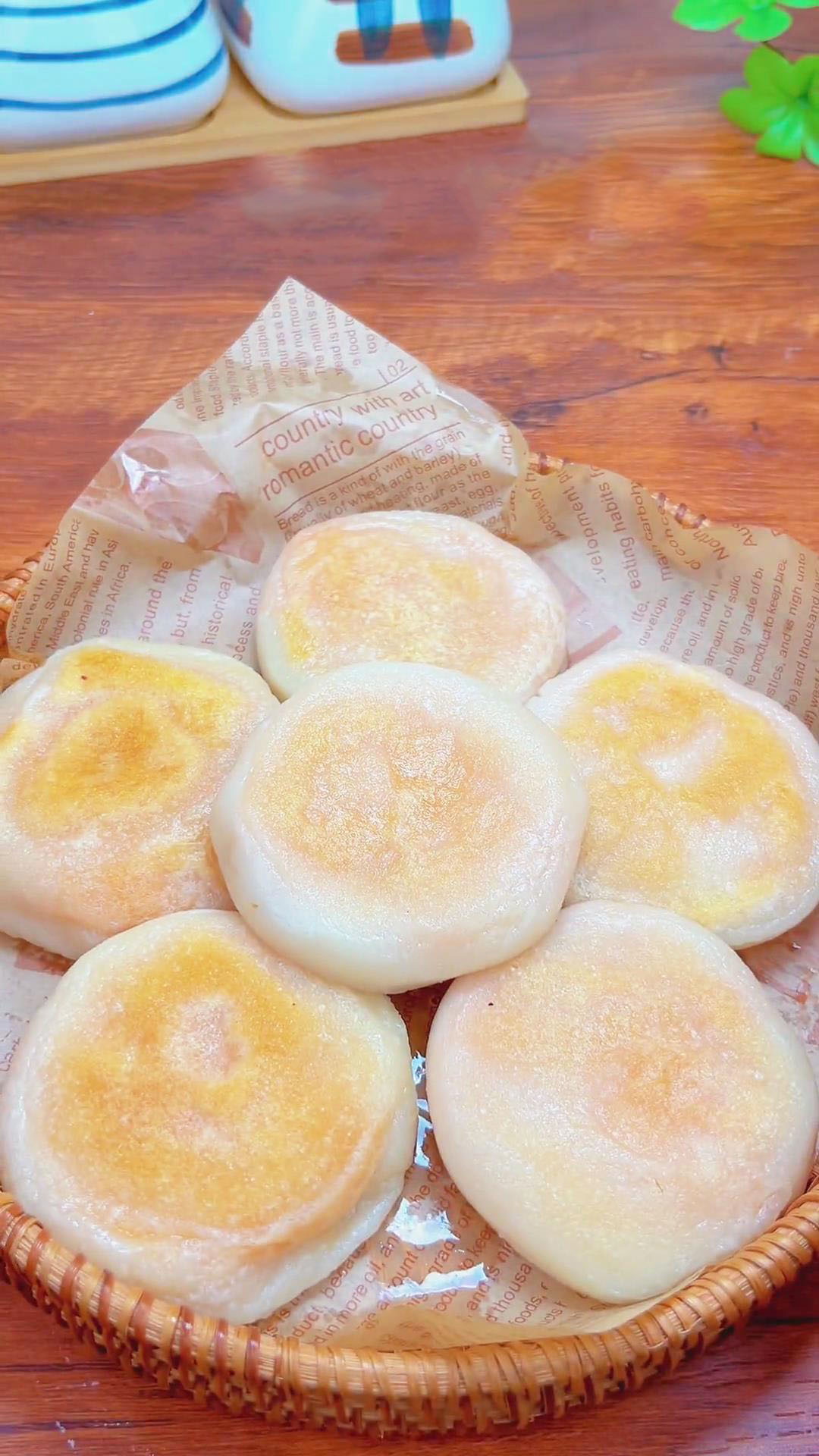
Once filled, the mochi is typically dusted with cornstarch or coconut flakes to prevent sticking and enhance the texture. Then, they’re ready to be enjoyed as a delightful treat.
However, Sweet Potato Mochi follows a slightly different method. Instead of using room temperature water, boiling water is added to the glutinous rice flour.
This hot water helps create a more elastic and pliable dough. Once the dough is kneaded into the desired consistency, it’s wrapped around a sweet potato paste filling.
The filled mochi is then fried until golden brown, creating a crispy exterior that contrasts beautifully with the soft and chewy interior.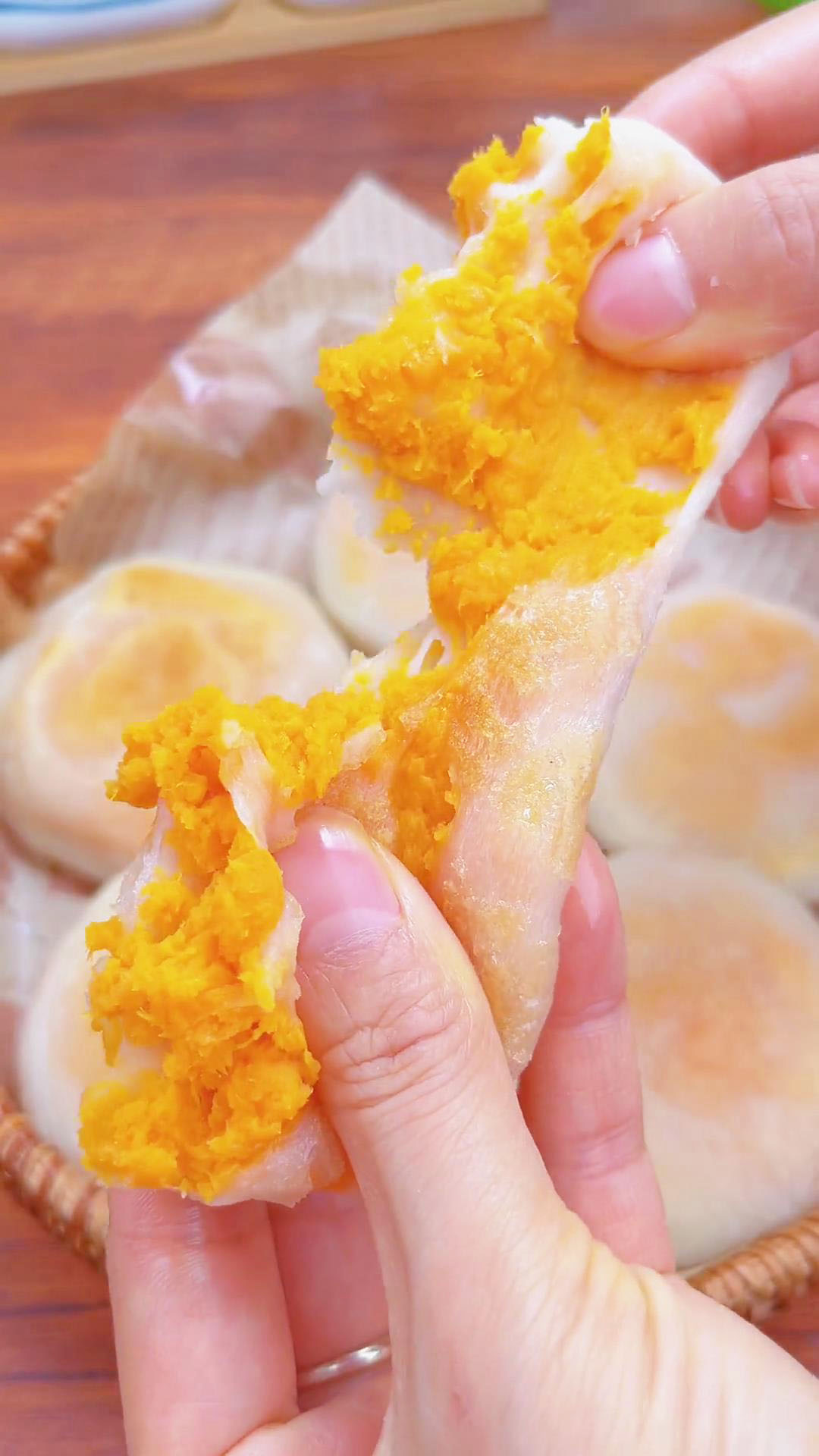
Top Recommendations And Alternatives
Glutinous rice flour: Glutinous rice flour serves as the key ingredient in creating various flavors of mochi, such as Boba Milk Tea Mochi, Matcha Mochi, Mango Mochi, and Peanut Mochi.
It provides that delightful sensation where the mochi sticks to your teeth and stretches as you bite into it.
Despite its name, “glutinous,” which refers to its sticky properties when cooked, it’s gluten-free. Investing in this special flour is truly worthwhile! Besides making mochi, there are countless other recipes on Kitchen Misadventures where glutinous rice flour can be used.
Whether it’s for crafting Nian Gao, Tang Yuan, Ham Sui Gok (Fried Glutinous Rice Dumplings), or Festive Snow Skin Mooncakes, having some leftover glutinous rice flour opens up a world of culinary possibilities!
Importantly, glutinous rice flour is distinct from regular rice flour. For a comprehensive comparison between the two flours, please refer to the article.
- Filling: The filling comprises a blend of white granulated sugar and mashed sweet potatoes, available in various types such as garnet, purple, and Japanese sweet potatoes. Any variety can be used, but note that it will influence the mochi’s color. Thinly slice the sweet potato for steaming, preferably into small pieces for faster cooking. Once steamed, mash the sweet potatoes and white granulated sugar into a paste, then shape portions of the paste into small balls. Leftover sweet potatoes can be utilized for making Sweet Potato Balls, Purple Sweet Potato Paste, or Purple Sweet Potato Buns. While I use white granulated sugar for sweetness, feel free to substitute with cane sugar, brown sugar, or coconut sugar, or omit the sugar entirely. Make your mochi more flavorful with different fillings, such as:
You will need these ingredients:
- 500g sweet potatoes, peeled and sliced
- 10g white sugar (for sweet potatoes)
- 200g glutinous rice flour
- 10g white sugar (for dough)
- 170g boiling water
- 2 tbsp cooking oil (for frying)
Follow these simple steps to create your own batch of sweet potato mochi:
Prepare the Sweet Potatoes: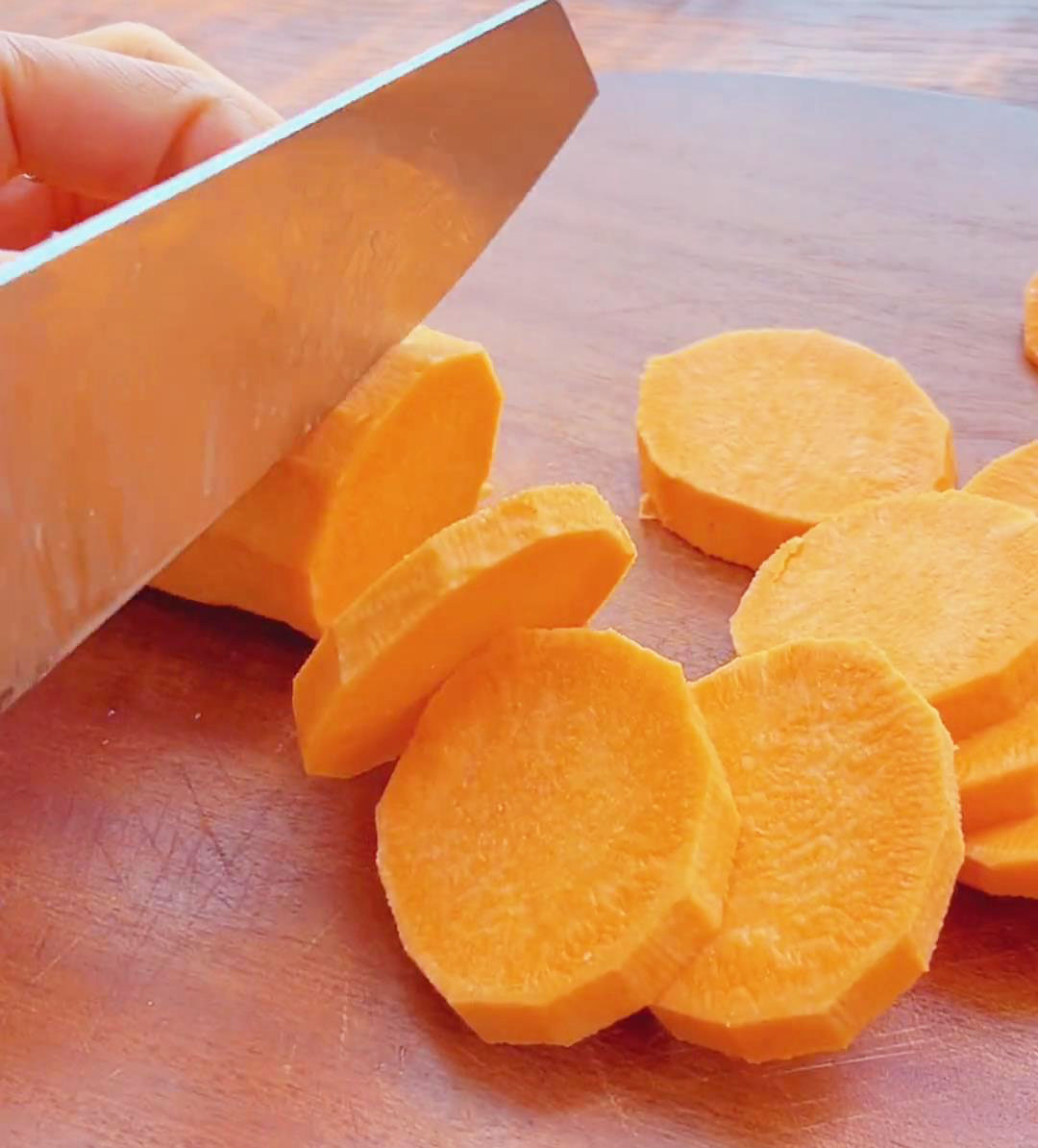
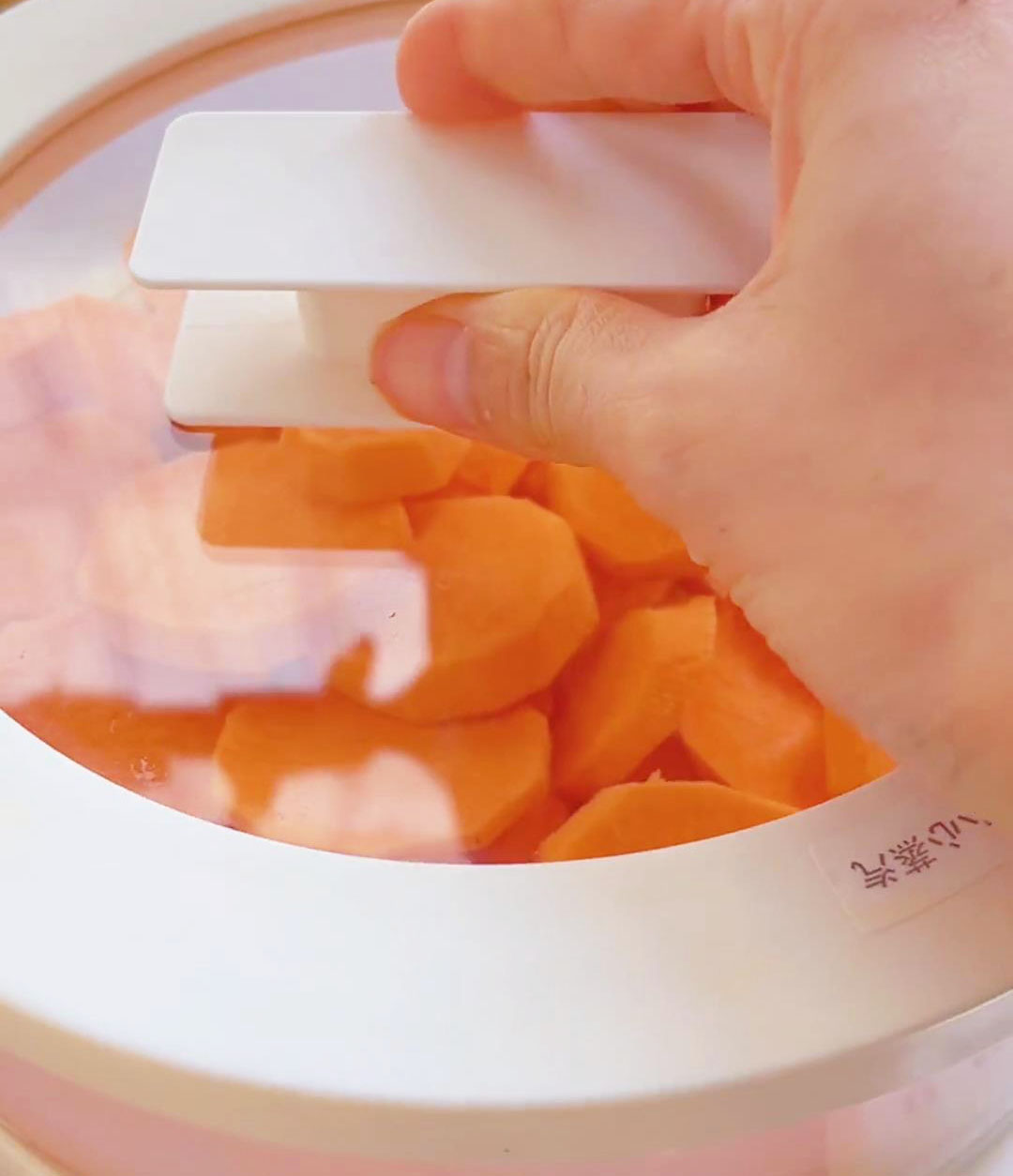
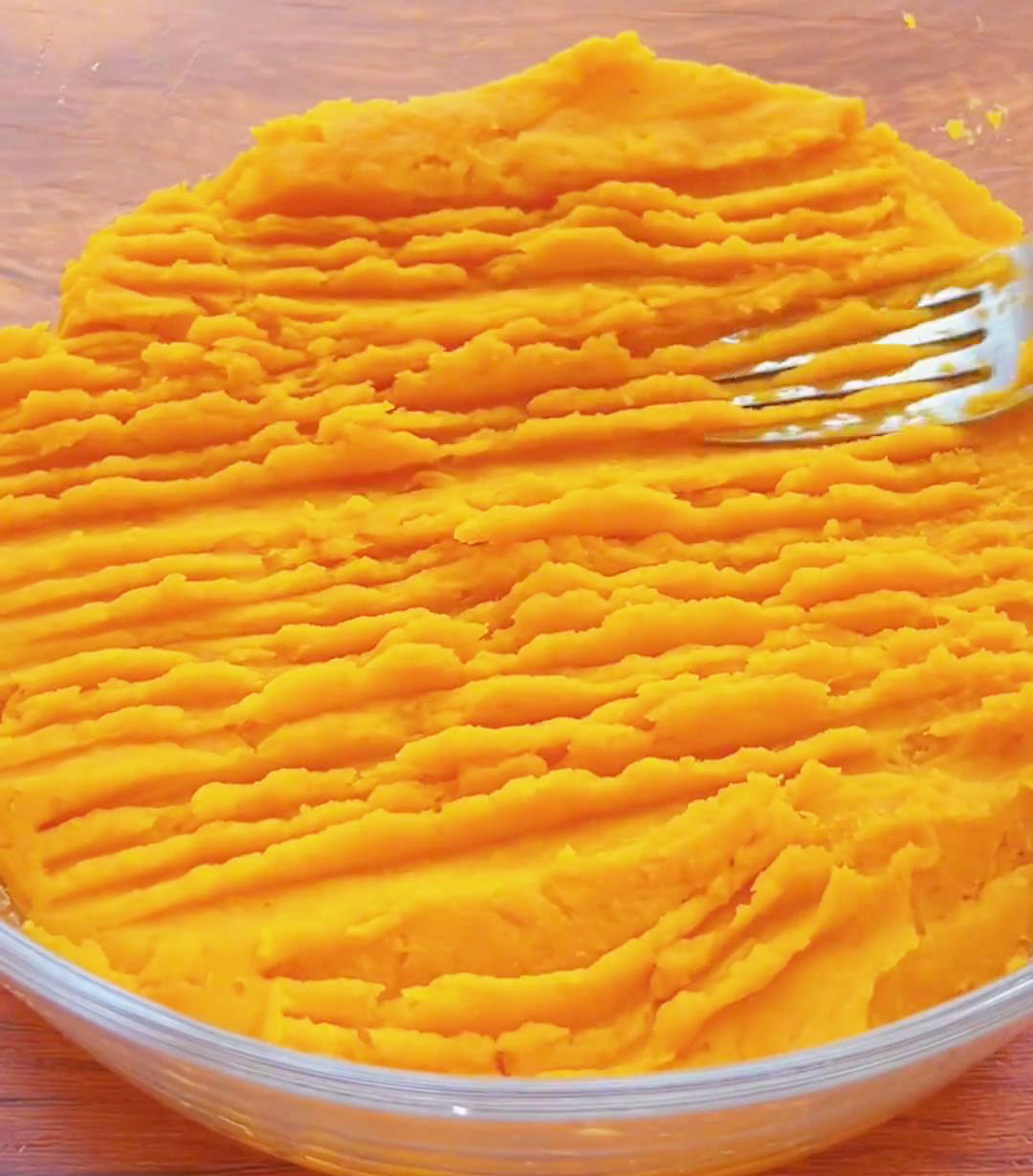
Begin by peeling and slicing 500g of sweet potatoes. Place the slices in a steamer and steam for approximately 10-15 minutes, or until they are fully cooked and soft.
Once the sweet potatoes are cooked, transfer them to a bowl and add 10g of sugar. Mash the sweet potatoes until they form a smooth and fine paste. Set aside.
Roll the Sweet Potato Balls: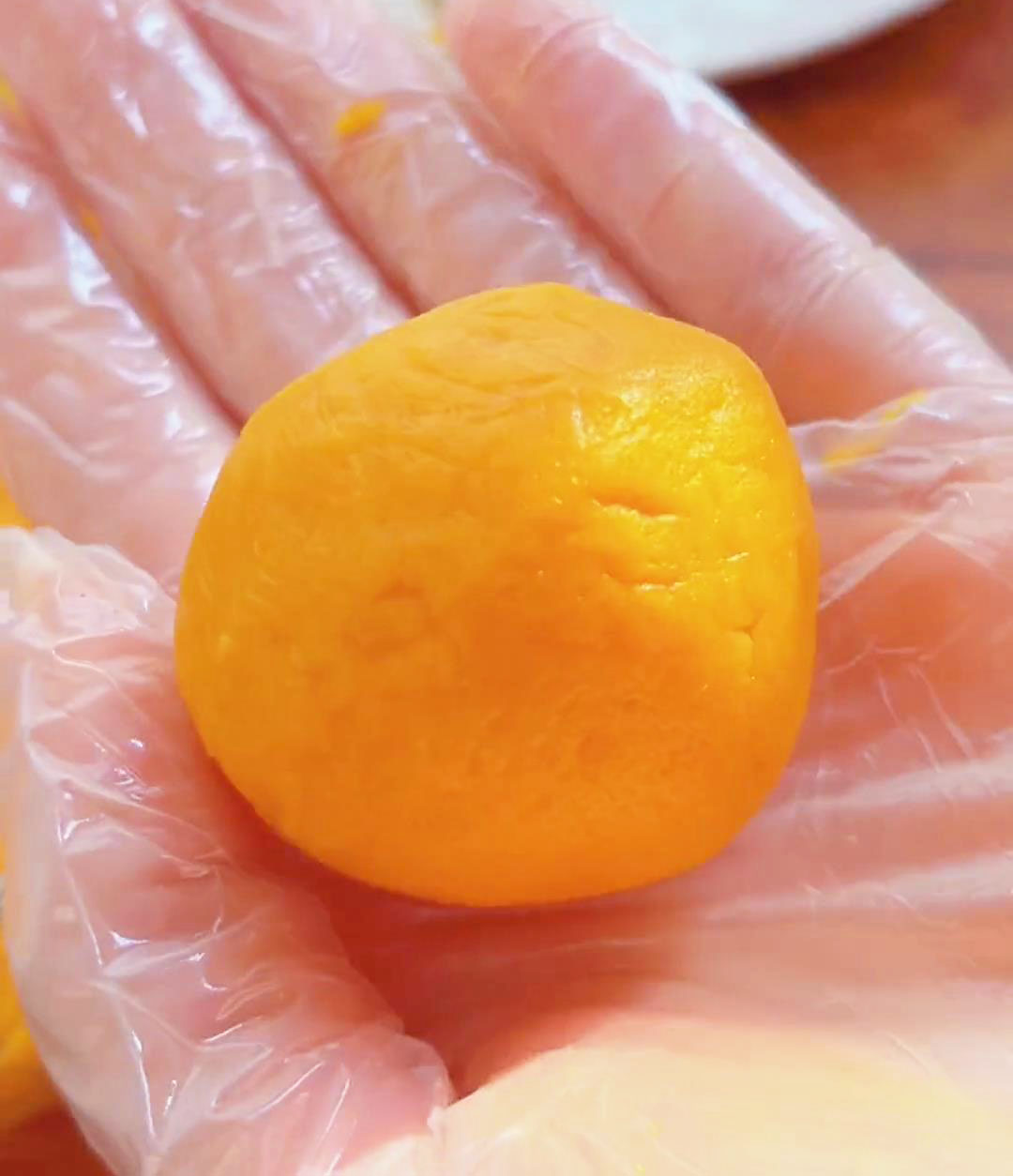
Take portions of the sweet potato paste and roll them into small balls, approximately 50g each. Set these sweet potato balls aside for later use.
Prepare the Mochi Dough: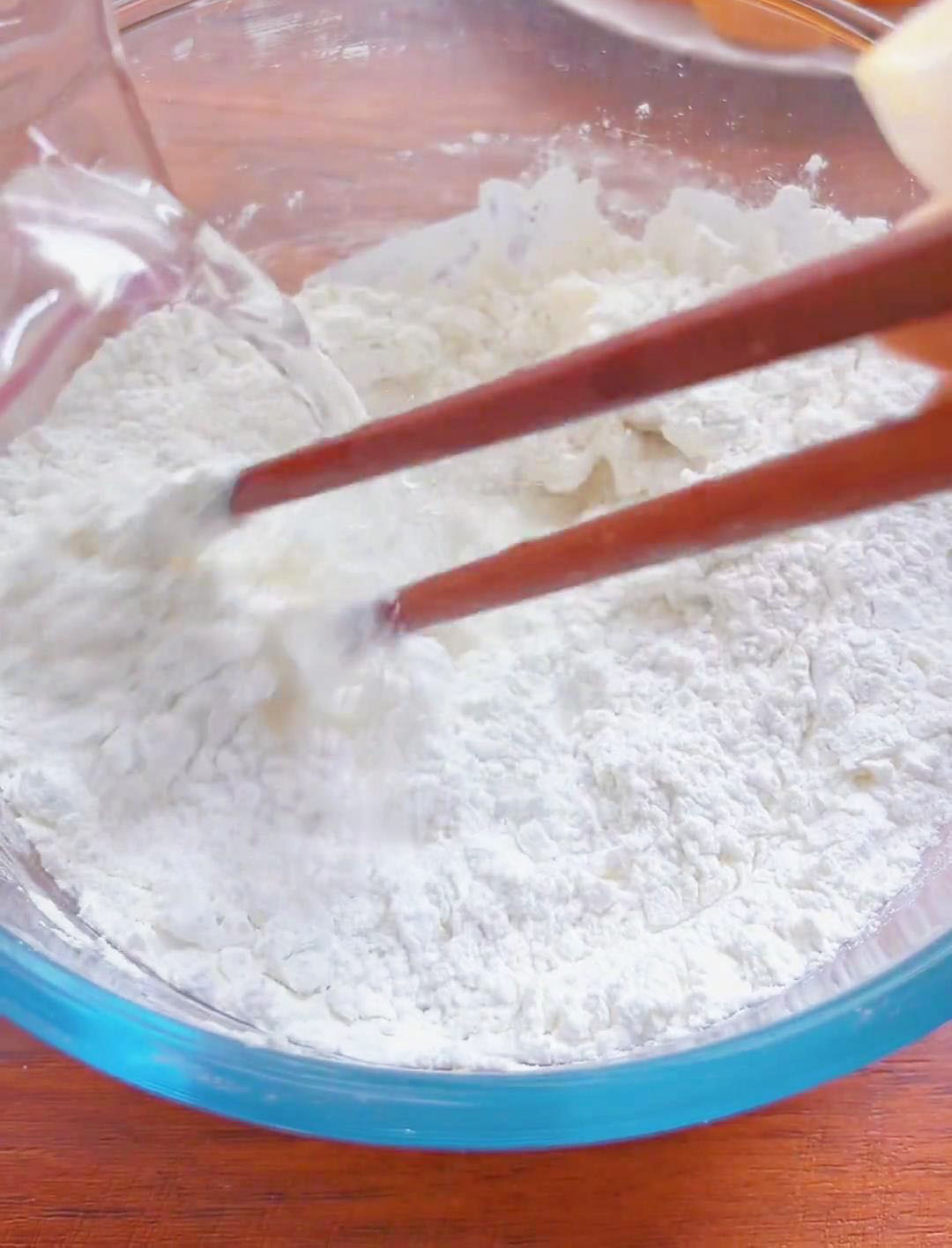
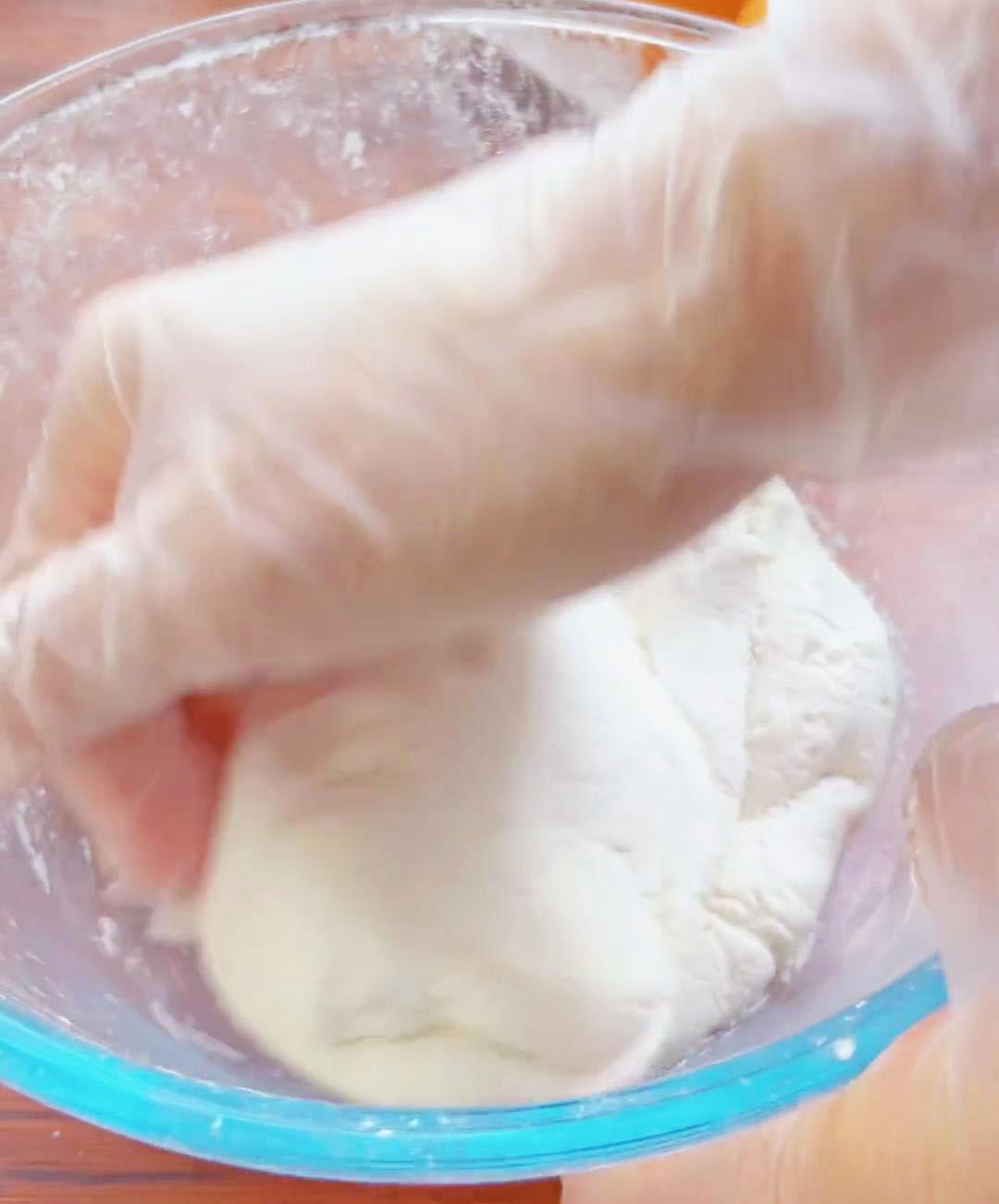
In a separate mixing bowl, combine 200g of glutinous rice flour with 10g of sugar. Gradually add 170g of boiling water to the flour mixture while stirring continuously. Continue stirring and kneading until a smooth and non-sticky dough forms.
Take a portion of the mochi dough, about 40g, and roll it into a ball. Flatten the ball into a disc using your palms or a rolling pin.
Assemble the Mochi:
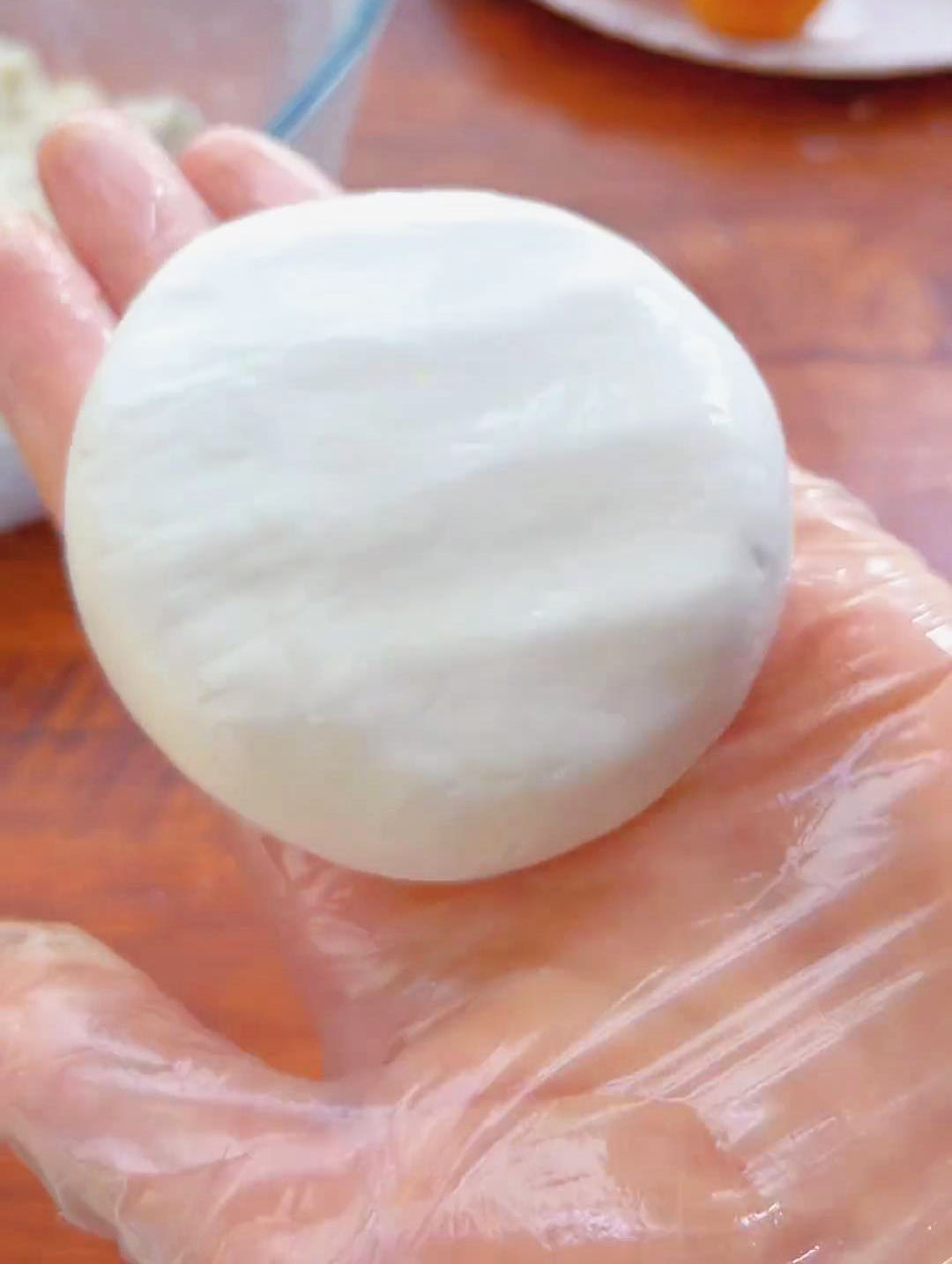
Place one sweet potato ball on top of each mochi wrapper. Carefully wrap the sweet potato ball with the mochi wrapper, ensuring it is completely covered.
Roll the wrapped mochi into a round shape and gently flatten it into a small cake.
Fry the Mochi: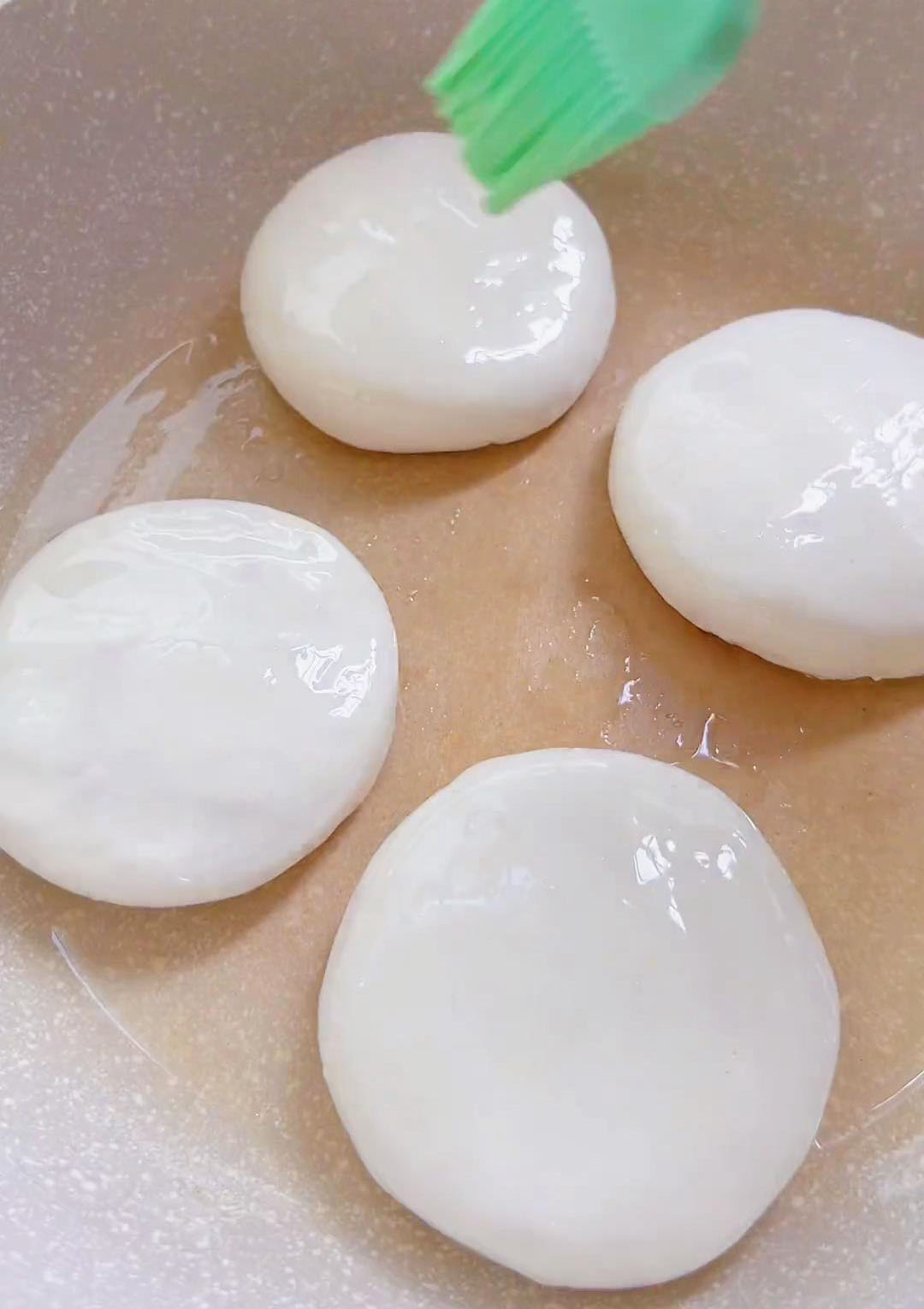
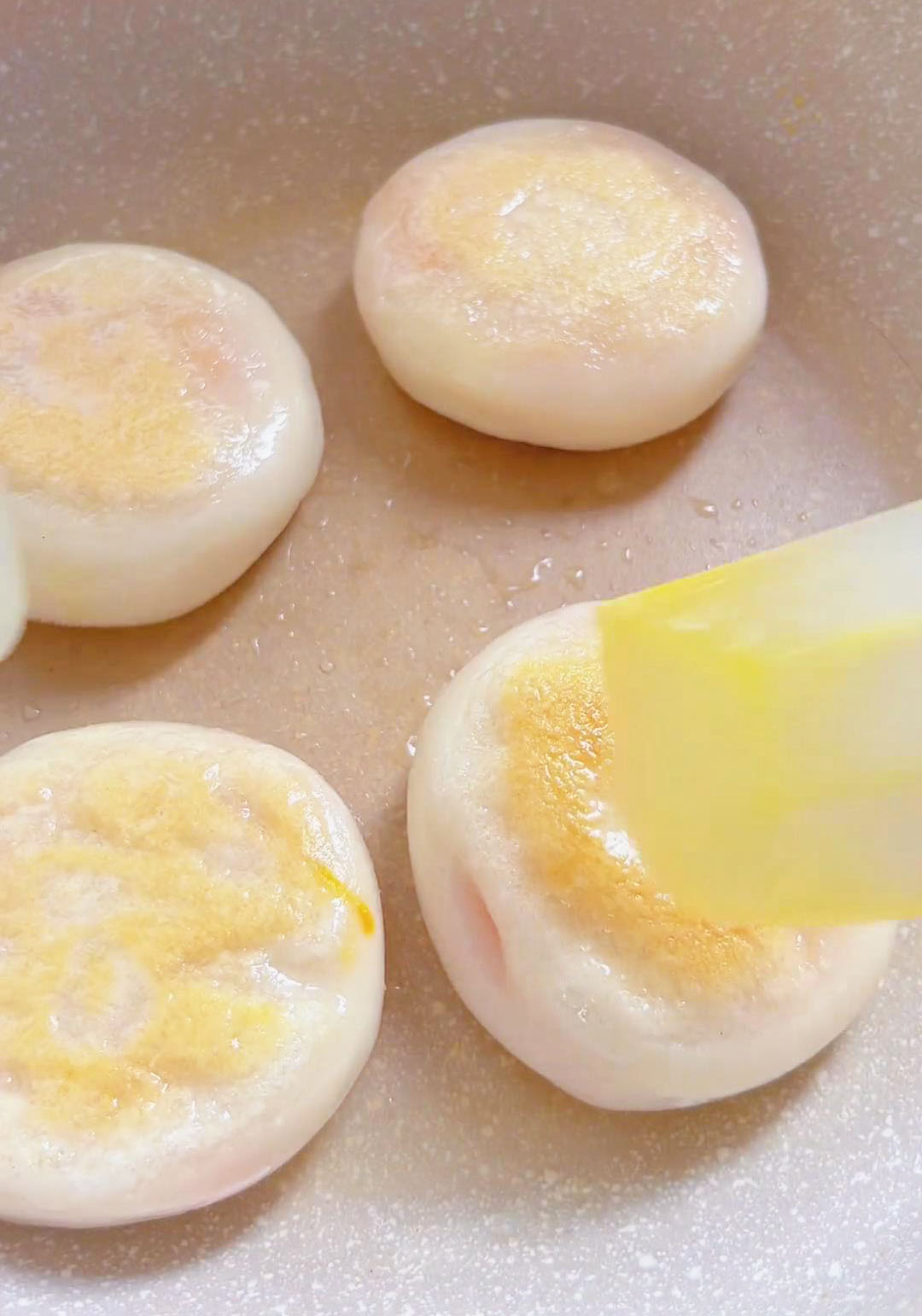
Heat some cooking oil in a pan over medium heat. Once the oil is hot, carefully place the mochi cakes in the pan. Brush the top of each mochi cake with a bit of cooking oil for added crispiness. Fry the mochi until both sides are golden brown and crispy.
Once fried to perfection, remove the mochi cakes from the pan and place them on a plate lined with paper towels to absorb excess oil.
Serve your sweet potato mochi warm and enjoy the irresistible combination of soft, sticky, and sweet flavors.
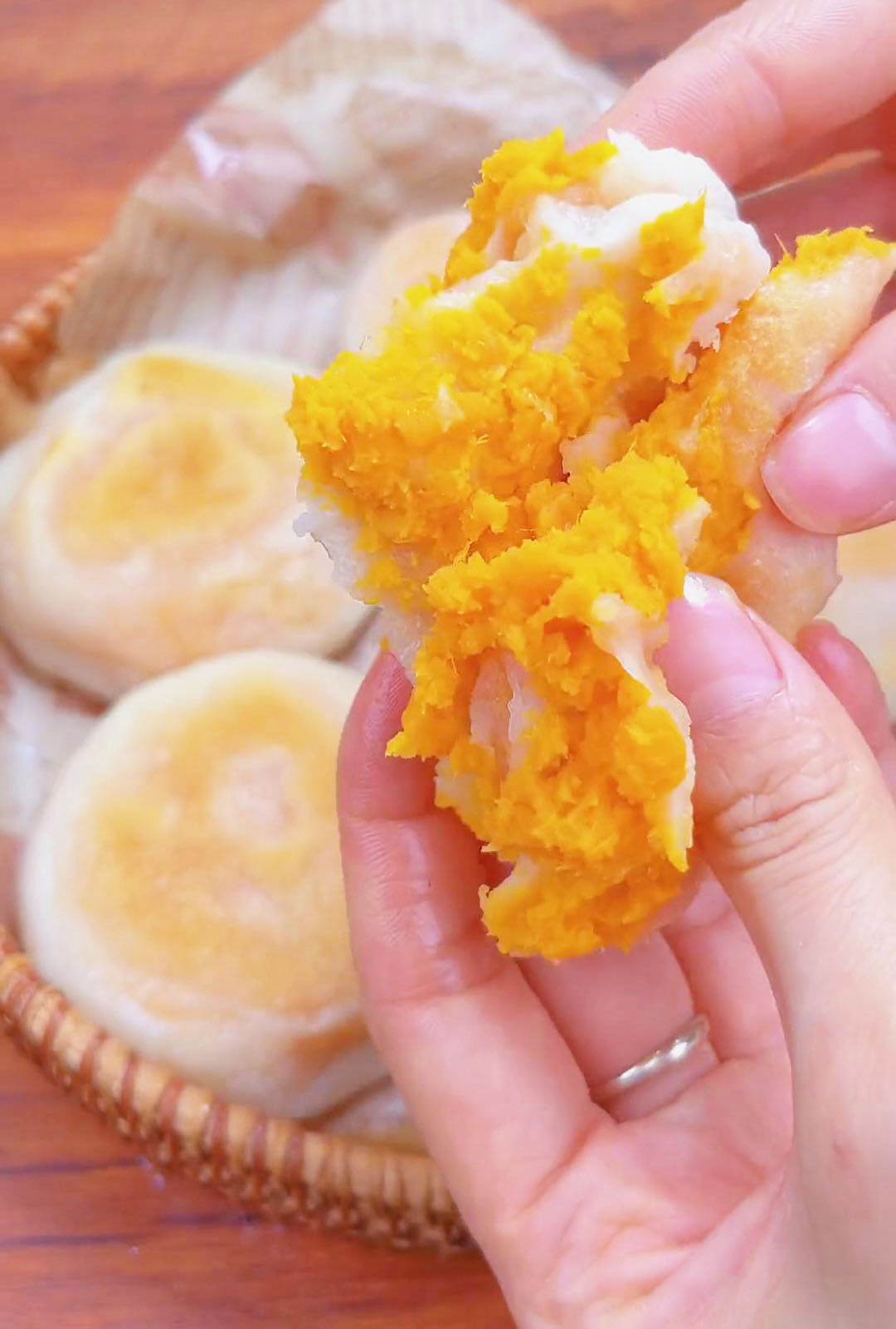

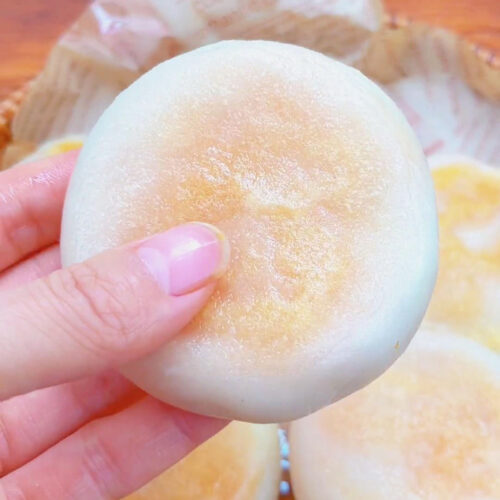
How to Make Sweet Potato Mochi
Ingredients
- 500 g sweet potatoes peeled and sliced
- 10 g white sugar for sweet potatoes
- 200 g glutinous rice flour
- 10 g white sugar for dough
- 170 g boiling water
- 2 tbsp cooking oil for frying
Instructions
Prepare the Sweet Potatoes:
- Begin by peeling and slicing 500g of sweet potatoes. Place the slices in a steamer and steam for approximately 10-15 minutes, or until they are fully cooked and soft.
- Once the sweet potatoes are cooked, transfer them to a bowl and add 10g of sugar. Mash the sweet potatoes until they form a smooth and fine paste. Set aside.
Roll the Sweet Potato Balls:
- Take portions of the sweet potato paste and roll them into small balls, approximately 50g each. Set these sweet potato balls aside for later use.
Prepare the Mochi Dough:
- In a separate mixing bowl, combine 200g of glutinous rice flour with 10g of sugar. Gradually add 170g of boiling water to the flour mixture while stirring continuously. Continue stirring and kneading until a smooth and non-sticky dough forms.
- Take a portion of the mochi dough, about 40g, and roll it into a ball. Flatten the ball into a disc using your palms or a rolling pin.
Assemble the Mochi:
- Place one sweet potato ball on top of each mochi wrapper. Carefully wrap the sweet potato ball with the mochi wrapper, ensuring it is completely covered.
- Roll the wrapped mochi into a round shape and gently flatten it into a small cake.
Fry the Mochi:
- Heat some cooking oil in a pan over medium heat. Once the oil is hot, carefully place the mochi cakes in the pan. Brush the top of each mochi cake with a bit of cooking oil for added crispiness. Fry the mochi until both sides are golden brown and crispy.
- Once fried to perfection, remove the mochi cakes from the pan and place them on a plate lined with paper towels to absorb excess oil.

